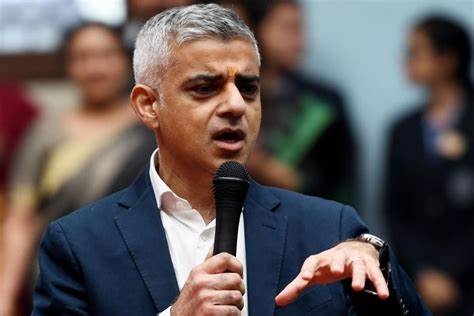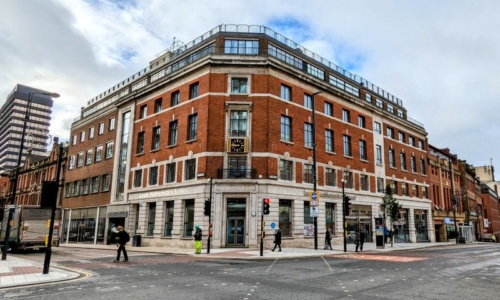
Sadiq Khan Green Belt U-Turn: What It Means for London’s Housing and Where New Homes Might Be Built
In a move that marks a significant shift in the UK’s housing strategy, Sadiq Khan has confirmed a green belt policy U-turn as part of his revised vision for the next London Plan 2026-2050. With the UK facing an escalating housing crisis, the mayor’s decision to consider low-quality green belt land for housing development could reshape the rest of the UK for decades to come.
However, this policy shift has raised important questions for construction developers, housing professionals, and built environment specialists who are now wondering: what this mean for future projects, and where exactly will these new homes be built?
“I Make It a Virtue, I’ve Changed My Mind”: Khan’s Strategic Shift
Speaking from a Kidbrooke Village construction site, Sadiq Khan publicly acknowledged his shift on green belt protection:
This policy change comes amidst pressure to deliver up to 88,000 new homes per year from Labour’s revamped housing targets. However, with a lot of the land being insufficient, Khan’s team is now exploring “grey belt” land, a term used for degraded green belt areas like disused petrol stations, garages, and poorly maintained golf courses.
Where Might New Homes Be Built in London’s Green Belt?
The mayor’s consultation document “Towards a New London Plan” provides clues about targeted boroughs and land types that are likely to be used for development.
Boroughs with Highest Green Belt Availability:
- Bromley (22%), Potential for 70,000 homes
- Hillingdon (14%), Home to Heathrow’s surrounding green space
- Havering (17.5%), Includes parts of the London Riverside Opportunity Area
Transport-Linked Opportunity Zones:
Khan emphasised a “transport-led approach” to housing delivery, where any green belt land used for new housing must be well connected to existing or planned public transport.
- Lee Valley (Enfield), Access to Overground and proposed Crossrail 2
- Bexley Riverside, Southeastern metro potential and Crossrail 2 extension
- Havering & Barking Riverside, Three new Elizabeth line stations
Other Opportunity Areas tied to infrastructure include:
- Thamesmead (DLR Extension)
- Catford, Lewisham, Elephant & Castle (Bakerloo line extension)
What Land Types Are at Risk?
Sadiq Khan assures Londoners that public parks and rich biodiversity zones will remain protected. However, the consultation highlights:
- Low-quality Metropolitan Open Land (MOL). e.g. golf courses
- Farmland with low ecological value
- Brownfield-adjacent sites within 2km of rail stations
The 2015 BusinessLDN report found that golf courses make up 7.1% of London’s green belt, with much of it neither publicly accessible nor environmentally rich.
Affordable Housing Rules and Building Quality Standards
Khan clarified he is not going to allow low-density luxury homes, as building conditions will require high-quality, affordable, and well-designed housing.
This aligns with central government requirements and supports socially equitable urban growth which is a crucial factor in EEAT-compliant policy evaluations and urban development project assessments.
Challenges Ahead: Infrastructure, Politics, and Local Resistance
Despite the ambition, four boroughs (Bexley, Bromley, Croydon, Hillingdon) have opted out of the mayor’s coordinated review, potentially undermining strategic development.
However, Khan remains hopeful about collaborating with central government for upgrades such as:
- Crossrail 2, Up to 200,000 homes unlocked
- DLR and Bakerloo extensions
- West London Orbital Line
- Metro-ising Southeastern rail lines
These upgrades are pivotal to achieving the vision of sustainable transport-oriented development in Greater London, and potenitally the rest of the UK.
Why This Matters for the Built Environment and Construction Sector
For those in construction, architecture, and planning, understanding London’s evolving housing policies is critical to understand what might be next in areas surrounding you. At Atkins Search, we support professionals and businesses navigating this shift by connecting them with opportunities with a diverse range of Consultancies, Main Contractors, Developers, and Sub-Contractors across the UK.
Partner with Atkins Search
As one of the UK’s most trusted recruitment partners and market-leading consultancies in the built environment, Atkins Search provides Permanent, Temporary, and Retained Search recruitment solutions across the East Midlands, West Midlands, North West, London, and Yorkshire
Whether you’re seeking senior planners, design managers, or infrastructure project leaders, our tailored recruitment services align with your strategic needs to provide job seekers who match your company’s skills and culture.
At Atkins Search, we specialise in connecting candidates with career-advancing roles in companies that inspire and motivate. Our focus is on providing opportunities that not only enhance your professional growth but also ensure job satisfaction and a positive work environment. Explore our opportunities.
Contact us today at www.atkinssearch.co.uk


